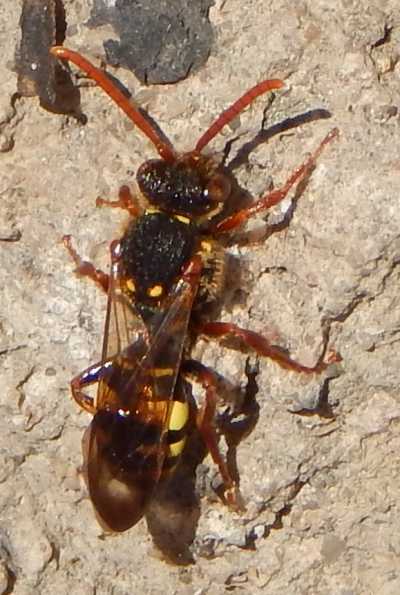Types Of Wasp
There are over 100,000 named species of wasp in the world. Wasps generally get a bad press (although their image seems to be improving in recent years).
By far, wasps are incredibly beneficial, helping to keep far less helpful invertebrates in check (from pest cockroaches to plant eating garden crop pests!).
Introducing Different Types Of Wasp!
Most people are familiar with only a handful of wasps. Take a look at this guide below and follow the links to learn more about these amazing diverse insects.
FAMILY: Vespidae (mason wasps, potter wasps, pollen wasps, paper wasps, hover wasps, yellowjackets, hornets)
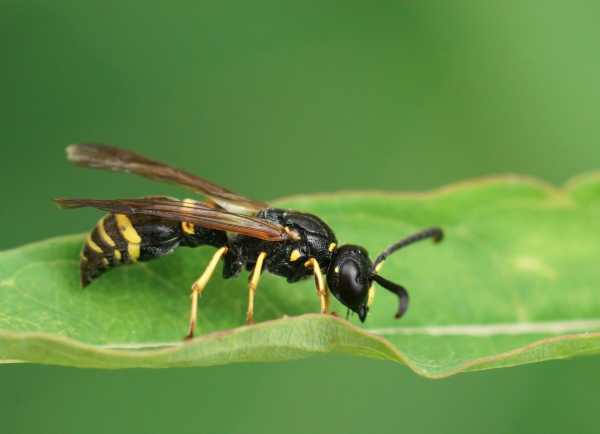 An Early Mason Wasp, Ancistrocerus nigricornis
An Early Mason Wasp, Ancistrocerus nigricornisThe vespid wasps are found in most habitats, including gardens, rural and suburban areas.
This group includes some of the wasps we are most familiar with, such as the yellowjackets (a term which encompasses 2 wasp genera) and hornets.
It also includes the paper wasps (Polistes species) which are sometimes confused with yellowjackets, and like the yellowjackets, construct impressive nests of hexagonal cells painstakingly made from slithers of plant matter.
However, other wasp architects in the vespidae family provide more simple, yet equally impressive homes in which their young are reared, with the potter wasps constructing endearing little clay pot-like cells that wouldn't look out of place in an artisan store. Just as the bald-faced hornet inspired paper making, it's probably safe to say that the the potter wasps (and mud daubers - see below) invented pottery before we did, given that wasps were on the planet before humans were!
On the other hand, you may come across a mason wasps making use of a pre-existing cavity or hole in a wall or insect hotel.
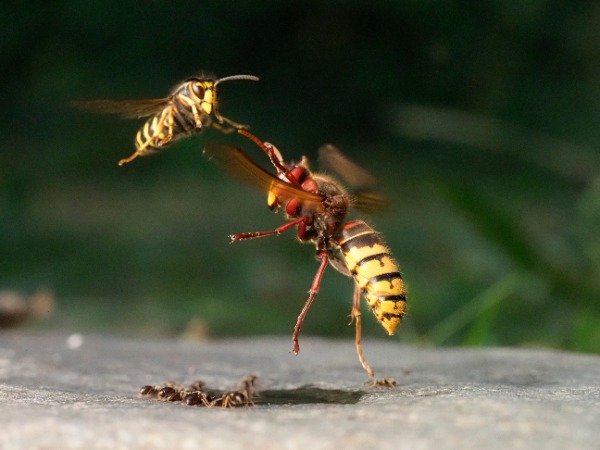 European hornet Vespa crabro warns off a social wasp (yellow jacket). Both share a family group with potter and mason wasps.
European hornet Vespa crabro warns off a social wasp (yellow jacket). Both share a family group with potter and mason wasps.Also belonging in the Vespidae family are the honey wasps.
FAMILY: Sphecidae - diggers, mud daubers and thread-waisted wasps
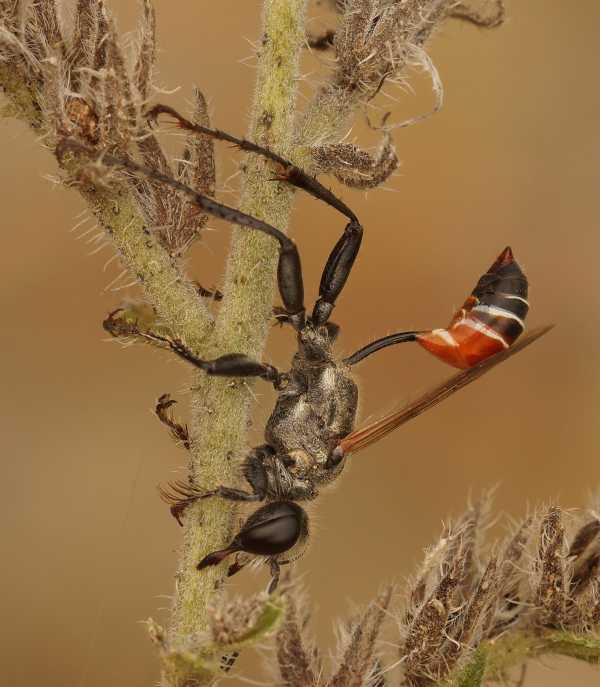 Thread-waisted wasp, Prionyx kirbii asleep on a plant stalk. Note how it grasps onto the stalk with its mandibles (jaws).
Thread-waisted wasp, Prionyx kirbii asleep on a plant stalk. Note how it grasps onto the stalk with its mandibles (jaws).All sphecids are solitary, stinging wasps. This group includes wasps with the common names digger, mud dauber and thread-waisted.
These wasps prey on other invertebrates, such as cockroaches, spiders and crickets. Adults may also gather honeydew secreted by aphids. As with some bees species, members of this group are known to sleep alone, or to congregate and 'sleep' in groups1.
FAMILY: Cynipidae - gall wasps
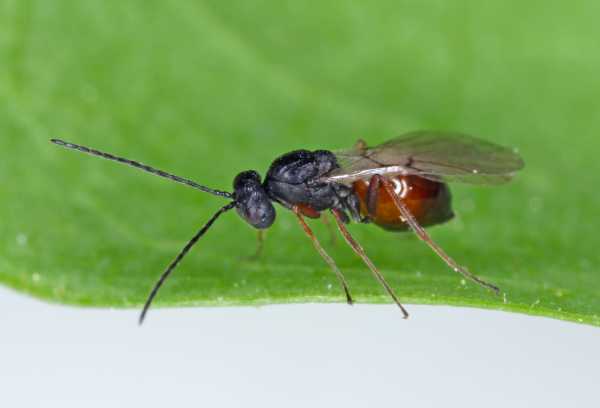 A Poppy stem gall wasp, Iraella luteipes
A Poppy stem gall wasp, Iraella luteipesA fascinating group, not least because of the variety of interesting galls. Take a look at some pictures and learn more about gall wasps and how gall wasps make galls.
Some gall wasps invade the galls of other wasps.
FAMILY: Agaonidae - fig wasps
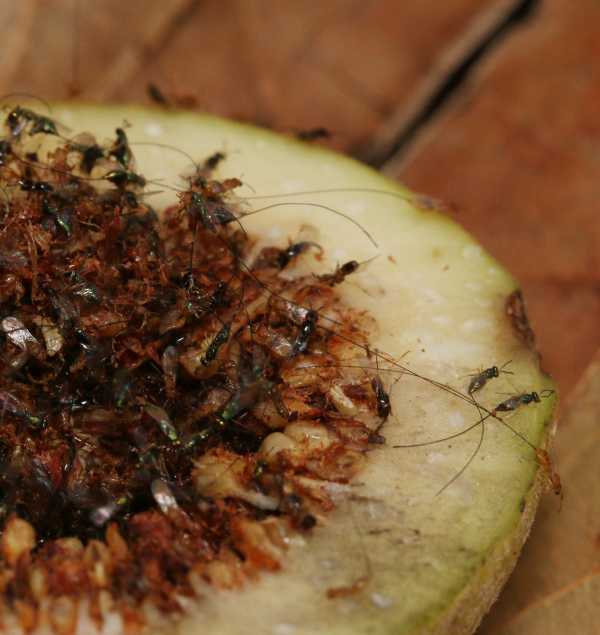
There are about 770 known species of fig wasp across the world1. They are regarded as solitary wasp species, but open up a fig occupied by fig wasps, and you'll see a mass of them.
Interestingly, fig wasps with long ovipositors (as in the picture) are parasitoids of other fig wasps, and don't actually pollinate the flower.
FAMILY: Torymidae
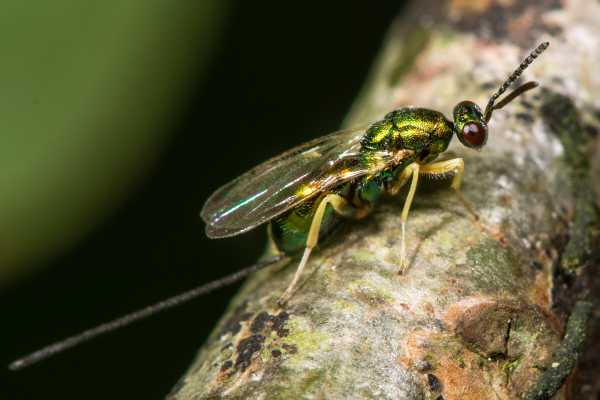
Torymids are very small, beautiful, metallic wasps. Some are associated with galls, but most are parasitoids of those gall formers. Some are inquilines, with the larvae feeding on the gall tissue, without harming the host larvae.
Some parasitoid torymids target the square-headed wasps found nesting in twigs1.
Torymidae are considered important because of their role in helping to control agricultural pests2.
FAMILY: Crabronidae - sand wasps, digger wasps, square-headed wasps
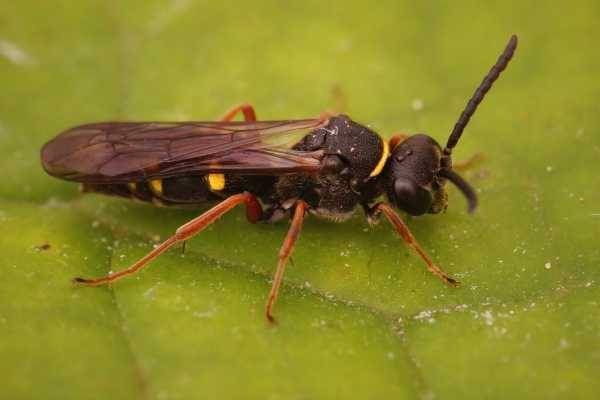 Closeup on the large spurred digger wasp, Nysson spinosus is a species of cleptoparasitic wasp of the family Crabronidae
Closeup on the large spurred digger wasp, Nysson spinosus is a species of cleptoparasitic wasp of the family CrabronidaeThis is a large wasp group, and entomologist, Eric R Eaton notes that crabonids are the most diverse of the stinging parasitoid wasps that exhibit a fascinating display of interesting behaviours is found in this group, in terms of nesting, host-finding and courtship1!
Some species in this group are solitary, others are primitively social, whilst others nest in aggregations.
FAMILY: Chrysididae - cuckoo wasps, gold wasps, ruby wasps, jewel wasps
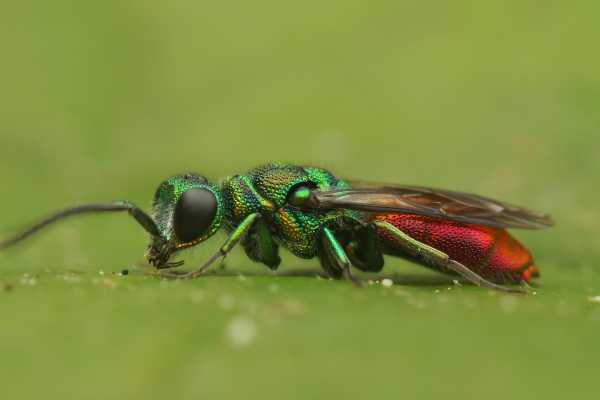 Ruby-tailed wasp, Chrysis ignita
Ruby-tailed wasp, Chrysis ignitaThese non-stinging metallic-jewels include some of the most beautiful wasp species! They are parasitoids, and their target host is primarily another wasp, or a bee, although some species target sawfly crop pests.
These are solitary wasps, and they are found on all continents except Antarctica, and in a variety of habitats, including rural, suburban and even urban areas.
FAMILY: Mutillidae - velvet ants
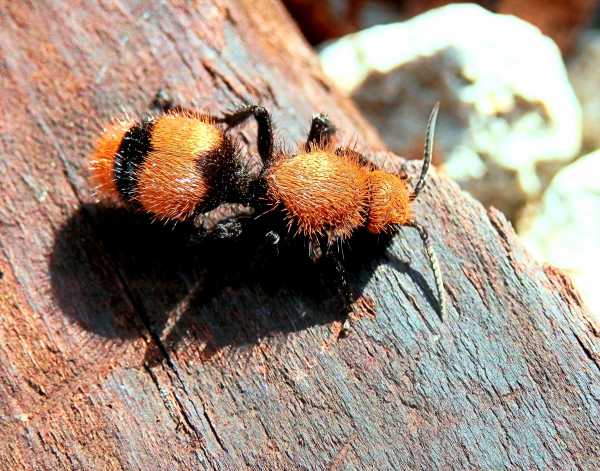 Eastern Velvet ant Dasymutilla occidentalis also known as the cow killer
Eastern Velvet ant Dasymutilla occidentalis also known as the cow killerThese rather furry looking wasps are not especially cuddly! Velvet ants are the wingless female wasps in the family Mutilidae. They have a fairly painful sting score of 3 on the Justin O. Schmidt scale (still not quite as painful as that delivered by its cousin, the Tarantula Hawk wasp, which had the top score of 4!
Males have wings.
From what we know of these species, they are largely parasites of other wasps (or bees).
FAMILY: Pompilidae - tarantula hawks, spider wasps
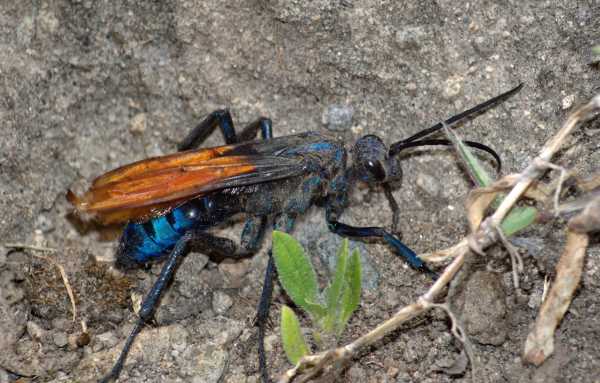 Tarantula hawk wasp female, possible Pepsis formosa or Pepis grossa
Tarantula hawk wasp female, possible Pepsis formosa or Pepis grossaThe spider hunting wasp group famously includes the large tarantula hawk wasp, although many spider hunting wasp species are actually rather small.
If you live in a region where there are tarantula hawks, well, they are rather beautiful wasps, but the females have very painful stings.
In short, it's best to leave them alone to get on with hunting tarantulas, which they paralyze and drag off, perhaps to a burrow in the earth where the spider will become food for her offspring.
Some species in the spider wasp group deposit the spider in a mud cell.
FAMILY: Scoliidae - mammoth wasps
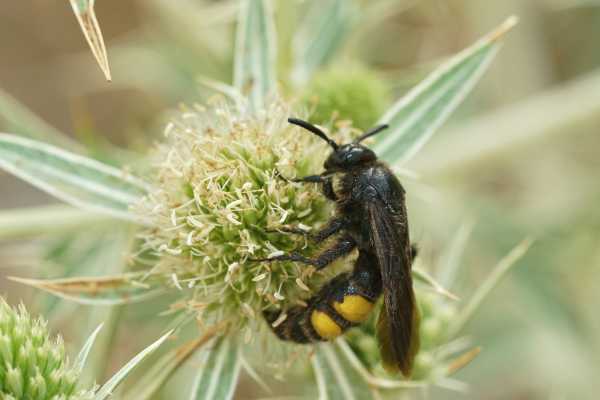 A Hairy scoliid wasp, Scolia hirta
A Hairy scoliid wasp, Scolia hirtaSome of these wasps are small, some are very large, with a wing span of around 4 cm! Some species also have very obviously iridescent wings.
This species is found in most habitats. These are robust, hairy wasps, and research has shown their hairy bodies can carry large amounts of pollen making them effective pollinators3.
The Scoliidae, the scoliid wasps, are a family of about 560 species found worldwide.
There are about 20 species in North America north of Mexico, Britain has 1 species Scolia sexmaculata (Six-spotted Scolia).
They are helpful as a natural control against some pest beetle species. The adult female wasp scoliid digs in soil and seeks out a host larva, paralyse it with her sting, then lay an egg on it. The wasp larva then feeds on the beetle larva.
FAMILY: Tiphidae - flower wasps
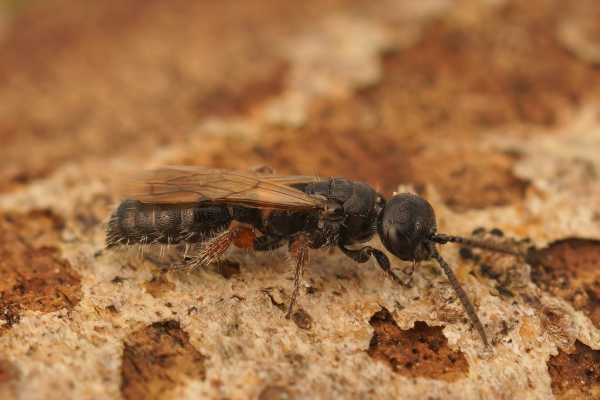 Common tiphiid wasp, Tiphia femorata
Common tiphiid wasp, Tiphia femorataSmall wasp visitors to flowers during spring and summer, these are parasitoids that target grubs of beetles. The female digs to find a host beetle, stings it to paralyze it temporarily, then lays an egg on it.
Females of some species are wingless.
References
1.Eric R. Heaton; Wasps – The Astonishing Diversity Of A Misunderstood Insect, Princeton University Press 2021.
2. Madjdzadeh, Seyed & Lotfalizadeh, Hossein & Abolhasanzadeh, Fatemeh. (2013). The family Torymidae (Hymenoptera: Chalcidoidea) of Kerman province, Southeastern Iran. Biharean Biologist. 7. 20-24.
3. Nagasaki, Osamu. (2021). Functional specialization for pollination by scoliid wasps and solitary bees of Ampelopsis glandulosa (Vitaceae). Flora. 284. 151921. 10.1016/j.flora.2021.151921.
If you found this page helpful or interesting, I'd really be grateful if you would share it with others - if not this page, perhaps another, such as Gardening For Bees.
Thank you so much :) .
